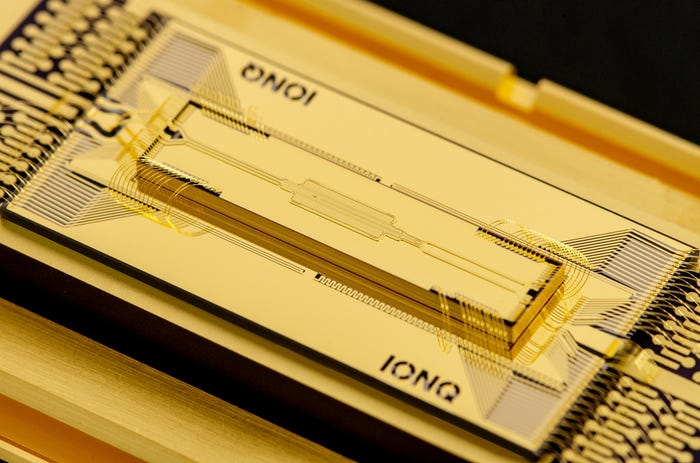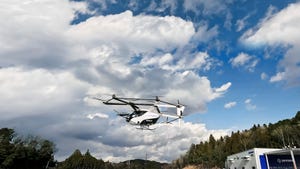The Transformative Power of AI for Industrial EnterprisesThe Transformative Power of AI for Industrial Enterprises
The next wave of digital transformation will come from a combination of edge computing and AI as a service
.png?width=1280&auto=webp&quality=95&format=jpg&disable=upscale)
Supply chain headaches. Worker safety concerns. Turning complex data streams into actionable insights.
Industrial enterprises face a bevy of challenges to not only thrive in the current business climate but to enact transformational change for whatever lies ahead.
Smart, targeted investments in AI will enable forward-thinking companies to optimize operations in the industrial space, giving them a leg up on the competition. In fact, IDC forecasts that enterprises will have spent $40 billion on generative AI in 2024 and will increase investment to $151 billion by 2027.
Welcome to the Industrial Edge
The next wave of digital transformation will come from a combination of edge computing and AI as a service, together with mission-critical connectivity, through a unified, industrial edge platform. This type of platform relocates computing tasks away from centralized data centers to devices on the “edge” of the network.
The mission-critical connectivity running on the platform, provided by 4G, 5G and WiFi, connects industrial machines, vehicles, robots, devices, drones and IoT sensors. Real-time data from these sources is gathered and processed centrally to create useful, on-location insights that can help keep workers safe, reduce energy usage and emissions, ensure quality control, boost productivity and enhance worker collaboration.
As a result, value is created through simplicity, accuracy, privacy, security and frugality — among the top factors enterprise leaders want from their AI solutions, according to a recent survey by IDC.
Practical, Real-World Solutions
If it’s difficult to visualize exactly what this looks like in the real world, consider some of the following use cases. With an AI-enabled industrial edge platform, companies can:
Increase situational awareness by continuously monitoring equipment to analyze data that could predict a potential gas leak or chemical spill, giving workers instant guidance on how to respond.
Track and analyze the biometric data of a lone worker operating heavy machinery, like a crane or underground mining vehicle, to judge whether that person is showing signs of fatigue.
Extract insights from vision analytics to detect when contaminants have entered a food-processing machine, helping leaders determine whether the substance can be traced to manufacturing conditions or an outside supplier.
Empower the workforce with contextual, language-based insights in areas such as enhanced predictive maintenance, streamlined decision making and safety scenarios.
Taking Data out of Silos
We all know that AI requires large, precise data sets. As industries digitize, data abounds but often remains siloed across diverse systems, complicating access and usage. This issue is only amplified when Gen AI technology is introduced.
However, a unified industrial edge platform connecting old and new assets clears these hurdles, enhancing data visibility across the organization and streamlining its integration for Industry 4.0 and Gen AI applications. This approach enables scalable operations and real-time, comprehensive data analysis, facilitating predictive maintenance and operational adjustments that adapt to evolving needs.
Reliable Connectivity Is Key
While data accuracy and consistency are important, optimized latency is a must to successfully implement Gen AI applications. Take an advanced warehouse, for example. Pervasive, reliable connectivity, in addition to real-time data processing, is crucial to supporting the contextual awareness that allows autonomous mobile robots (AMRs) and vehicles to safely navigate obstacles, including people.
From a network standpoint, such mission-critical operations demand the performance of on-premises, industrial edge processing. This ensures data is processed closer to the source, reducing latency and enabling safer, more reliable and more accurate operations.
Enhanced Governance and Security
Maintaining security across an industrial environment that relies on multiple systems is time-consuming, costly and inefficient. But with a unified, industrial edge platform, data is processed on-premise using sophisticated encryption techniques built into 4G and 5G cellular networks. By equipping edge devices with AI, enterprises can monitor and analyze data in real time, quickly detecting suspicious activity or security threats.
Connecting Legacy Tech
Don’t let legacy technology that isn’t AI-ready stop you from innovating. Industrial sites can connect older vehicles and equipment to an edge digitalization platform using industrial devices, meaning data can now be captured to get actionable insights. The goal is to integrate data and applications from various sources smoothly, without reprogramming or replacing industrial controllers and other essential equipment. From a financial standpoint, “as a service” subscription models can provide greater support and flexibility, with the option to add capabilities as needs grow.
Finding the Right Partner
According to IDC, 85% of enterprises are actively evaluating whether to implement new Gen AI-enabling infrastructure and about one-third are beginning to budget for it.
And while the digital transformation journey might seem daunting, it doesn’t have to be.
The key is to seek out a trusted partner who offers a unified platform for edge compute, mission-critical connectivity and AI as a service — one that integrates top industry ecosystem applications and connects a legacy environment. Then, you’ll be on the road to transformational change.
About the Author
You May Also Like
.png?width=100&auto=webp&quality=80&disable=upscale)
.png?width=400&auto=webp&quality=80&disable=upscale)




